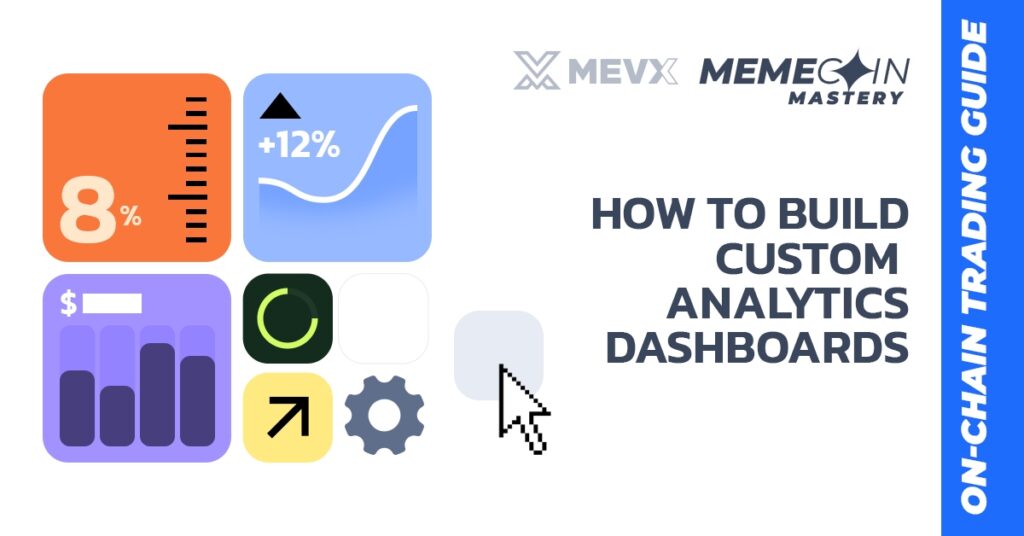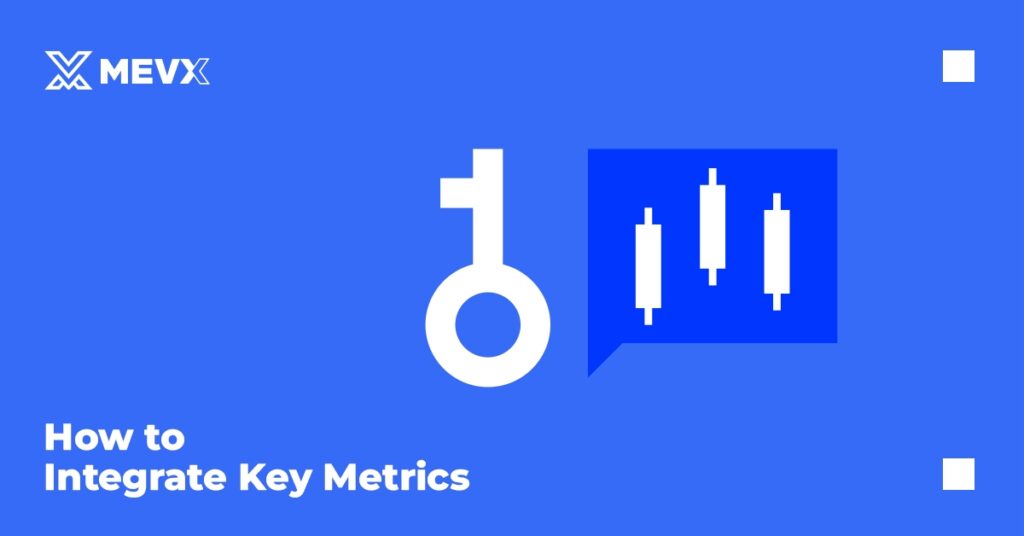Professional meme coin trading requires constant monitoring of multiple data streams across various chains, tokens, and market conditions. Building your custom analytics dashboards enables traders to consolidate critical information, automate routine analysis, and focus attention on the signals that matter most for their specific strategies.

Essential Analytics Dashboard Components
Real-Time Market Overview
The foundation of any effective meme coin dashboard centers on real-time market surveillance that goes beyond simple price tracking. Integrate live liquidity data, volume patterns, and holder activity metrics for your active positions and watchlist tokens.
Design your overview section to display critical metrics at a glance: current positions with unrealized P&L, liquidity health scores, recent whale activity alerts, and new token discoveries that match your screening criteria. This high-level view should enable rapid assessment of overall portfolio status and emerging opportunities within seconds of dashboard access.
Multi-Chain Position Tracking
For traders operating across multiple blockchains, unified position tracking becomes essential for maintaining accurate portfolio oversight. Build integration systems that aggregate holdings across Solana, Ethereum, Base, and other chains into single consolidated views.
Include cross-chain analysis that highlights when multiple positions share similar risk factors through common whale holders, shared liquidity providers, or correlated market maker activity. This consolidated approach prevents inadvertent concentration risks that aren’t apparent when viewing positions on individual chains separately.
How to Integrate Key Metrics
Liquidity Health Monitoring
Implement a continuous liquidity assessment that tracks not just total value locked but liquidity distribution, concentration risks, and historical stability patterns. Create visual indicators that quickly communicate liquidity health through color-coding or numerical scores.
Advanced liquidity monitoring includes tracking the ratio of your position size to available liquidity, alerting when your holdings represent concerning percentages of total tradeable supply. This metric becomes critical for exit planning and risk management across different position sizes.

Social Signal Correlation
Integrate social media monitoring with on-chain data to identify divergences between narrative strength and underlying fundamentals. Track metrics like mention volume, sentiment scores, and influencer engagement alongside holder growth and transaction patterns.
Effective social integration highlights when social momentum outpaces fundamental development, often signaling overextension, or when strong fundamentals exist without corresponding social recognition, indicating potential undervaluation opportunities.
Whale Movement Intelligence
Develop comprehensive whale tracking systems that monitor not just individual large transactions but patterns of coordinated activity across multiple addresses. Include wallet clustering analysis that identifies when seemingly separate addresses may be controlled by the same entity.
Create alert systems that trigger when whale activity patterns change, such as addresses that historically held long-term beginning to show increased transaction frequency, or new large accumulations by previously unknown addresses.
Automated Alert Systems
Tiered Notification Framework
Design alert systems with clear prioritization that ensures critical information receives immediate attention while routine updates don’t create alert fatigue. Implement three-tier systems: critical alerts for immediate threats or high-priority opportunities, medium alerts for developing situations requiring monitoring, and informational alerts for trend tracking.
Critical alerts should include rapid liquidity removal, coordinated whale exits, or technical indicators suggesting imminent price volatility. Medium alerts track gradual changes in holder distribution, social sentiment shifts, or emerging competitive threats. Informational alerts monitor longer-term trends and market development that inform strategic planning.
Cross-Platform Integration
Configure alert delivery across multiple platforms to ensure critical information reaches you regardless of current activity. Integrate with mobile notifications, email systems, Discord or Telegram bots, and desktop applications for comprehensive coverage.
Advanced integration includes conditional alert routing based on severity levels, time of day, or current market conditions. Critical alerts should interrupt regardless of circumstances, while routine notifications can queue for appropriate delivery windows.
Performance Measurement Frameworks
Attribution Analysis Systems
Build comprehensive performance tracking that isolates returns attributable to different decision factors: on-chain analysis, social signal timing, technical analysis, or fundamental research. This attribution analysis helps refine which information sources provide the most value for your trading approach.
Track performance across different market conditions, position holding periods, and token characteristics to identify patterns in your most successful trades. This analysis enables continuous improvement in strategy development and resource allocation.
Risk-Adjusted Performance Metrics
Implement sophisticated performance measurement that accounts for risk exposure, not just absolute returns. Track metrics like Sharpe ratios, maximum drawdown periods, and return consistency across different market environments.
Advanced performance analysis includes correlation with overall market conditions, helping identify when your strategies provide genuine alpha versus simply benefiting from favorable market trends.
How to Build Technical Implementation Strategies
Data Source Integration
Effective custom dashboards require reliable data feeds from multiple sources: blockchain RPC endpoints, DEX APIs, social media platforms, and market data providers. Build redundant data connections to ensure continuous operation even when individual sources experience issues.
Consider data freshness requirements for different metrics. Price and liquidity data need near real-time updates, while holder analysis can operate effectively with 15-30 minute delays. Optimize update frequencies to balance information currency with resource consumption.

Visualization Optimization
Design dashboard layouts that prioritize information hierarchy based on decision urgency and frequency of reference. Place critical real-time metrics in prominent positions while organizing detailed analysis tools in easily accessible secondary sections.
Implement responsive design principles that maintain functionality across different screen sizes and device types, ensuring dashboard utility whether accessed from desktop workstations or mobile devices during active trading.
Scalability Planning
Build a dashboard architecture that accommodates growing data requirements as your trading operation expands. Consider database requirements, processing capacity, and user interface performance as position counts and monitoring complexity increase.
Plan for multi-user access if your trading operation includes team members or if you intend to share specific dashboard views with other traders or analysts.
Advanced Analytics Integration
Machine Learning Implementation
Integrate machine learning algorithms that identify patterns in successful trades, market conditions, or timing decisions. These systems can highlight opportunities that match historically profitable scenarios while flagging situations associated with poor outcomes.
Advanced ML integration includes sentiment analysis of social media content, pattern recognition in whale movement data, and predictive modeling for liquidity stability based on historical patterns.
Custom Indicator Development
Create proprietary indicators that combine multiple data sources into unified signals specific to your trading approach. These might include composite scores that weight on-chain metrics, social signals, and technical indicators according to their historical predictive value for your strategies.
Maintenance and Evolution
Continuous Optimization
Dashboard effectiveness requires ongoing refinement based on changing market conditions, new on-chain data sources, and evolving trading strategies. Implement regular review processes that evaluate metric relevance and adjust display priorities based on actual usage patterns.
Integration Expansion
Plan for regular integration of new on-chain data sources, analytics tools, and market intelligence platforms as they become available. The meme coin trading landscape evolves rapidly, and dashboard flexibility enables adaptation to new opportunities and challenges.
Custom analytics dashboards transform scattered information into actionable intelligence, enabling faster decision-making and more consistent trading performance. Investment in sophisticated monitoring systems pays dividends through improved execution timing and enhanced risk management across all trading activities.
Next article: “Scaling Your Operations: From Manual to Automated” – where we’ll explore systematic approaches to automating routine trading tasks while maintaining strategic oversight and decision quality.
Follow our MevX blog for more updated guides on on-chain trading.
Share on Social Media:
